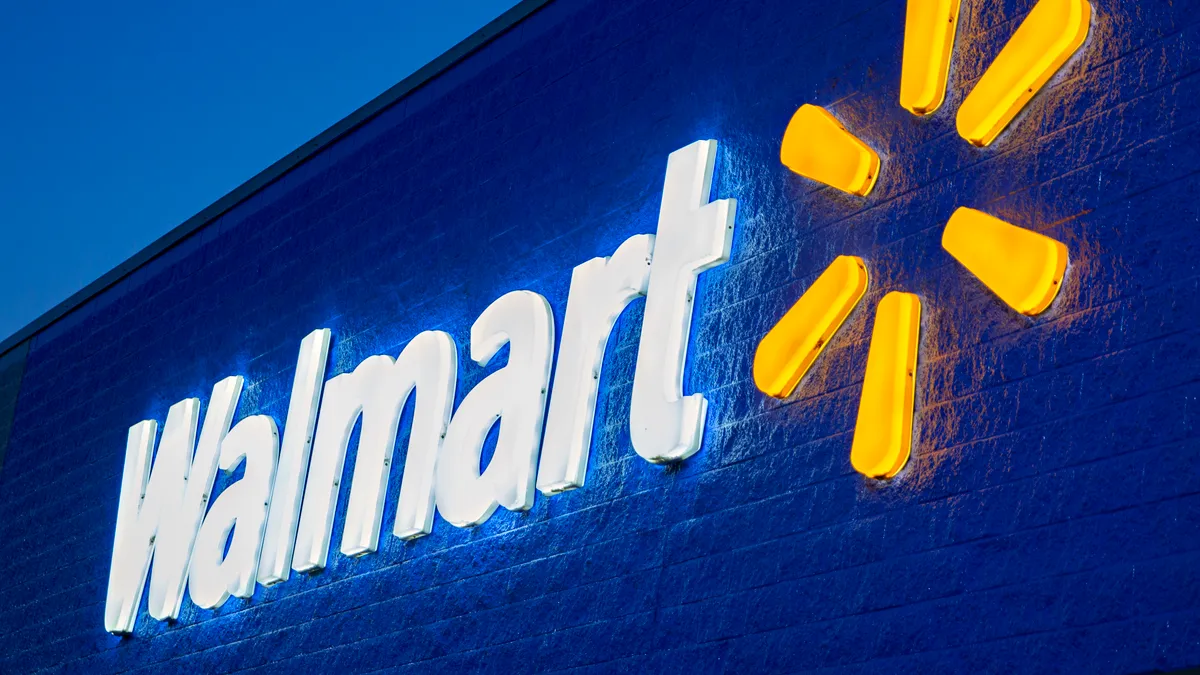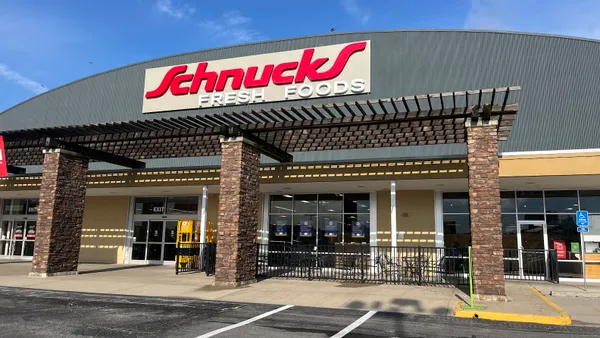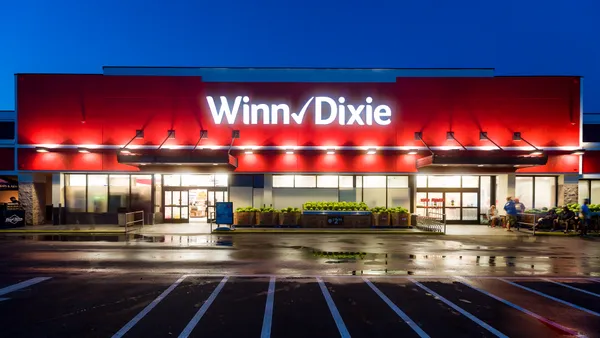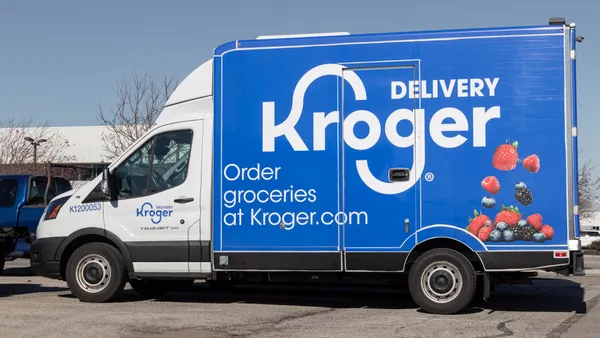Dive Brief:
- Walmart grew its sales across much of its business in the second quarter against a difficult-to-compare performance in 2020, pointing to grocery as one of the top categories driving growth.
- Grocery was up 6% year-over-year, helped by modest ticket inflation, and saw low double-digit growth over a two-year basis. The company posted growth of $2.4 billion in food sales year-over-year and roughly $5.5 billion on a two-year stack, Brett Biggs, executive vice president and chief financial officer for Walmart, said during an earnings call Tuesday.
- Company executives underscored fresh as an important part of grocery’s strong performance for Walmart and Sam’s Club. “It’s one thing to stay in stock on corn flakes. It’s another to merchandise fresh, and the teams have done a nice job during this period,” Walmart CEO Doug McMillon said.
Dive Insight:
Grocery is a key area for future investments as Walmart shifts to “more of a digital-first mindset,” McMillon told investors.
Along with the quality of fresh items, strong pricing positioning and improved in-stocks contributed to grocery’s growth in Q2, executives said. “We are very encouraged that units are growing faster than dollar share in grocery,” said John Furner, president and CEO of Walmart's U.S. operations.
Recently, the category’s momentum has been driven by added capacity in Walmart’s supply chain network, growth in pickup and e-commerce in food, and product improvements in produce and meat, Furner said. In particular, Walmart has been building more capacity for pickup orders, executives noted.
Going forward, McMillon said there are opportunities to combine food and healthcare together with its membership program Walmart+, McMillon said.
Walmart's U.S. sales rose 5.3% year over year to $98.2 billion, with comparable sales up 5.2% and transactions up 6.1%. Comps at Sam's Club were up 7.7%, and Sam's e-commerce sales were up 27%.
E-commerce sales grew 6% against the same period in 2020, a quarter in which the retailer's digital sales nearly doubled due to pandemic-driven online shopping and consumer stockpiling. For the year, Walmart is on pace to reach $75 billion in e-commerce sales worldwide, it said.
McMillon said that starting in late Q1 the company saw consumer traffic shift from online and pickup channels to in-store shopping, a trend that continued into Q2. Walmart's advantage is in its store base and technological investments that allow it to sell and fulfill fluidly across channels.
Noting the shifts in consumer shopping patterns, McMillon said, "The good news for us is that we can serve them either way, and of course they get to choose."
That in part explains how Walmart was able to grow sales even after losing the breakneck momentum in its digital business from much of last year. The slowdown online comes against a highly unusual year for comparison's sake. Yet GlobalData Managing Director Neil Saunders noted in emailed comments that Walmart's online performance "is below that of the total market and well below Amazon’s growth."
Saunders highlighted a potential online issue for Walmart the retailer has been trying for years to address. "Walmart needs to move its online appeal well beyond its core customers so that it can access higher levels of spending from younger and more affluent groups," Saunders said.
Along with stimulus payments, Walmart and its grocery business have also benefited from price inflation in the economy, driven in part by supply chain bottlenecks through the global trade system. Inflation has "increased price sensitivity among consumers and sent some scrambling to reduce spend," Saunders said. "Here, Walmart’s low-price position is extremely beneficial, which is one of the reasons it has been able to gain market share during the quarter."
As it invests its way into a consummate omnichannel retailer, something else is happening at Walmart. Much like rival Amazon, which has made tremendous profits from renting out its in-house cloud and fulfillment operations, Walmart is looking to make money off its technological, digital and logistical successes.
The company's Walmart Connect advertising business nearly doubled in the quarter, with active advertisers up 170%, McMillon said. Walmart's fulfillment services business improved sequentially by 150 basis points in gross merchandise value. Walmart also recently announced it would start making its omnichannel capabilities and technology available to other retailers through a partnership with Adobe.
McMillon said that the company is more and more finding ways to deploy new technologies that it develops across the business and is becoming more digital-first in its approach. It is also trying to make more profit off those efforts in ways previously unfamiliar to a company laser-focused on retail operations.












